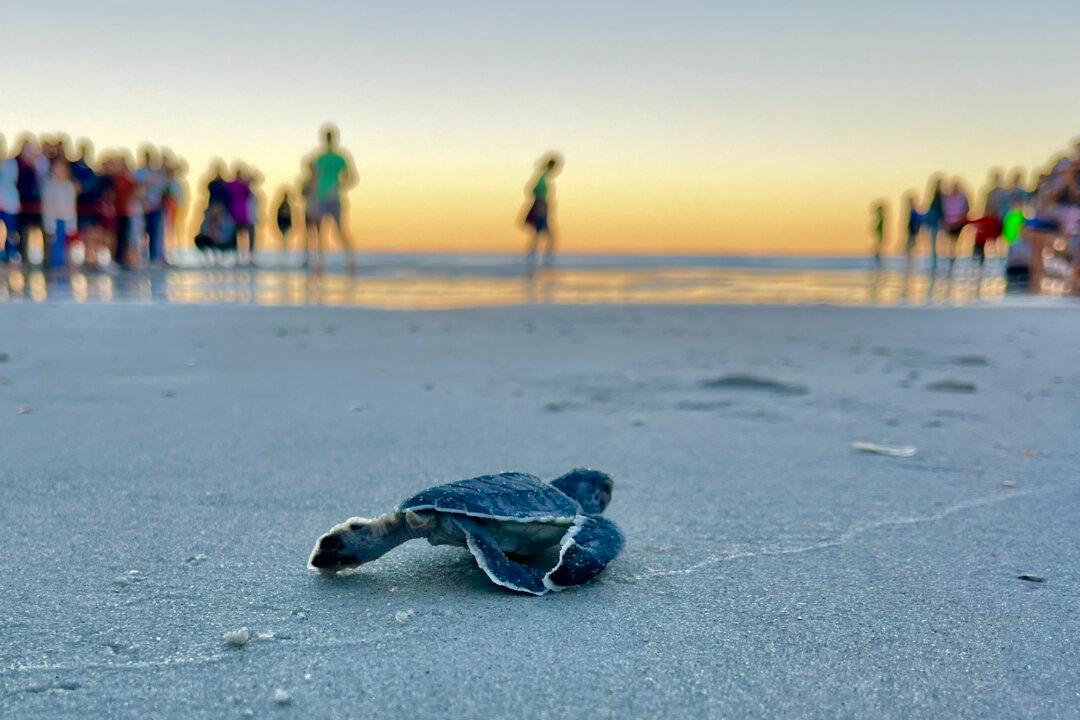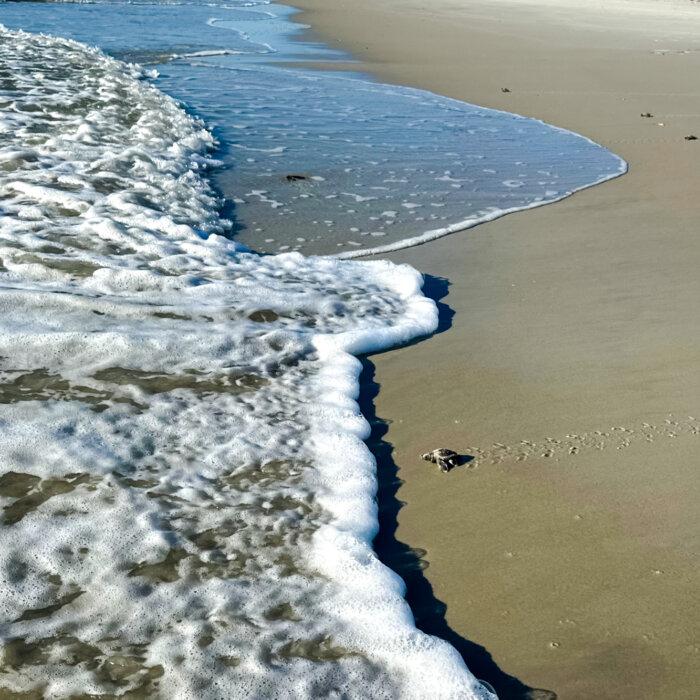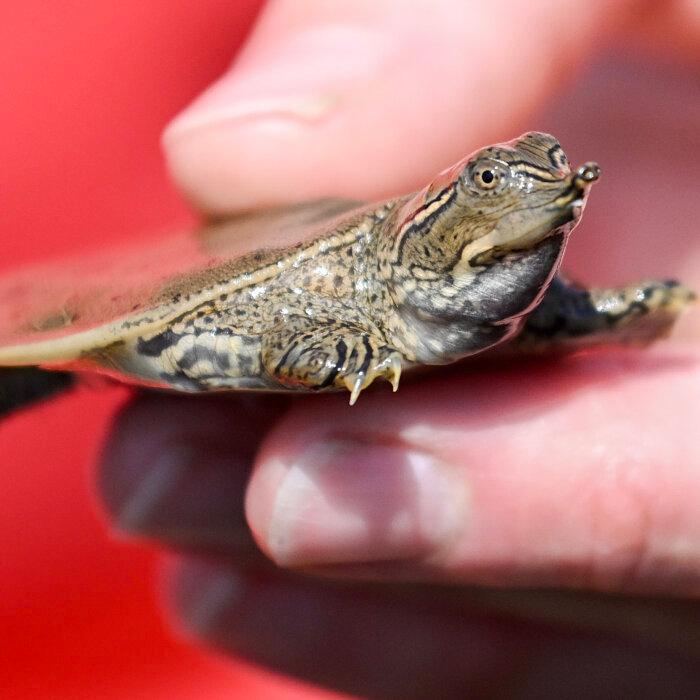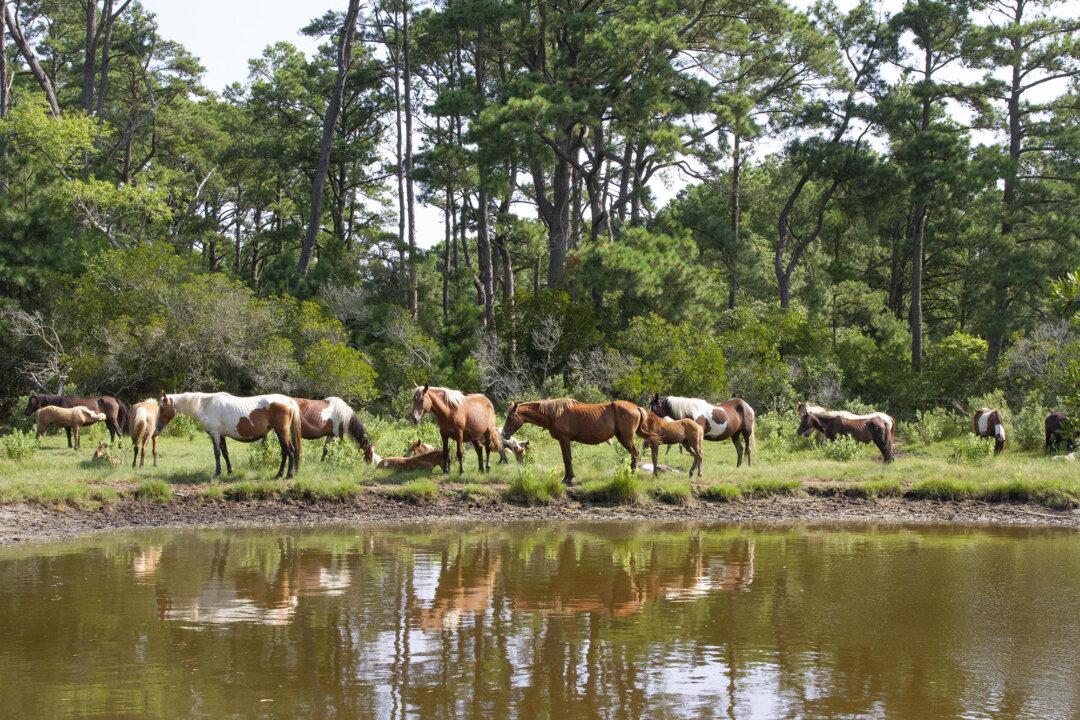Some beach enthusiasts in Florida are feeling extra thankful for the chance to witness a discovery made on the state’s northern coastline.
Despite batterings by the angry surf of two major hurricanes and inundations from soaking rains, researchers found that a late-in-season nest of green sea turtle eggs on Ponte Vedra Beach had—against the odds—survived.
And beachgoers attending a scientific evaluation of the nest on Nov. 21 were uplifted by a rare treat—the opportunity to see tiny turtles, apparently trapped at the bottom of the nest, released to begin their journey to the Sargasso Sea.
Volunteers on Patrol
Led by a researcher with a special permit, trained volunteers with the Mickler’s Landing Turtle Patrol walk a 4.6-mile stretch of beach in St. Johns County, Florida, at sunrise throughout the nesting season.Similar crews plod through the sand on beaches around the state. They scout for turtle nests laid the night before. They mark them with stakes, move them from dunes being reconstructed, when necessary, and monitor them for signs of hatching.
Usually, after about 55 days of incubation, tiny turtle tracks emanate from the sand over a nest. Baby turtles seem to work cooperatively each night after hatching to push their way out of the cavity that can be about 3 feet deep, said Lucas Meers, the permit holder of the Mickler’s Landing crew.
After the signs of hatching appear, turtle patrol crews wait three days to give all the baby turtles a chance to emerge from the nest.
Then volunteers excavate the cavity, sorting and counting broken and intact eggs and reporting the numbers to the state.
That was their mission a little before sunset on Nov. 21.
Because it would be their last post-hatch evaluation of the season, they had issued a public invitation on social media. But they weren’t sure what they'd find under the sand.
They knew what kind of turtle had made the nest. The morning after, they read the distinctive tracks she'd left in the sand after laying her eggs and returning to the ocean.
She was a green sea turtle, the second-most-common species, after loggerheads, to nest in Florida.
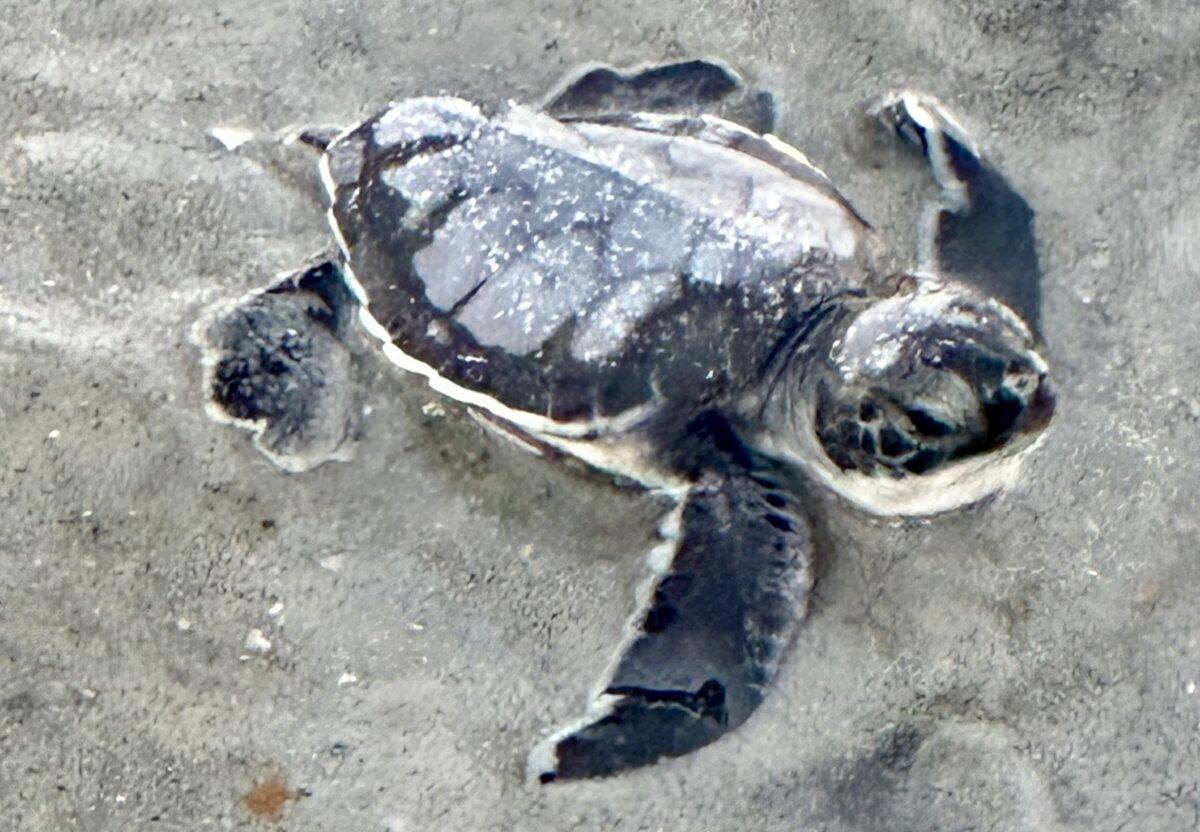
But her nest hadn’t behaved as normal.
This year, nests on this particular stretch of Atlantic coastline had an average incubation of 51.4 days, Meers said. That meant hatchlings emerged an average of nearly four days earlier than expected. That’s probably because it was a hotter summer with less rain, he said.
But this nest’s hatching was late. Very late.
When tiny turtle tracks finally appeared in the sand, it had been 71 days since the eggs were deposited at the bottom of the three-foot hole dug by the female turtle.
The lateness could be blamed on the rain from Hurricanes Helene and Milton and the recent cool weather, Meers said.
‘Turtle Groupie’
Since moving to St. Johns County, Florida, from Pennsylvania a couple of years ago, Theresa Weidenhammer has attended nearly every public nest evaluation announced by the area’s turtle patrol.Sometimes, she’s seen researchers and their volunteer helpers find only remains of eggs left behind. They count and sort them, gathering valuable clues about the health trends of sea turtle populations.
But sometimes, beneath the sand, there’s treasure.
As a crowd gathered near the water’s edge during the team’s recent evaluation, a pair of researchers worked to pull out and sort egg fragments.
Weidenhammer watched and waited, hoping.
The team formed neat rows with the egg fragments, pulling them out and laying them aside, one by one.
And then, there was something else.
“The reason I’m a repeat, or a turtle groupie, is because it’s the anticipation of not knowing” what they'll find in the nest, Weidenhammer told The Epoch Times.
This time, it was a tiny hatchling.
Then, another.
Then two more.
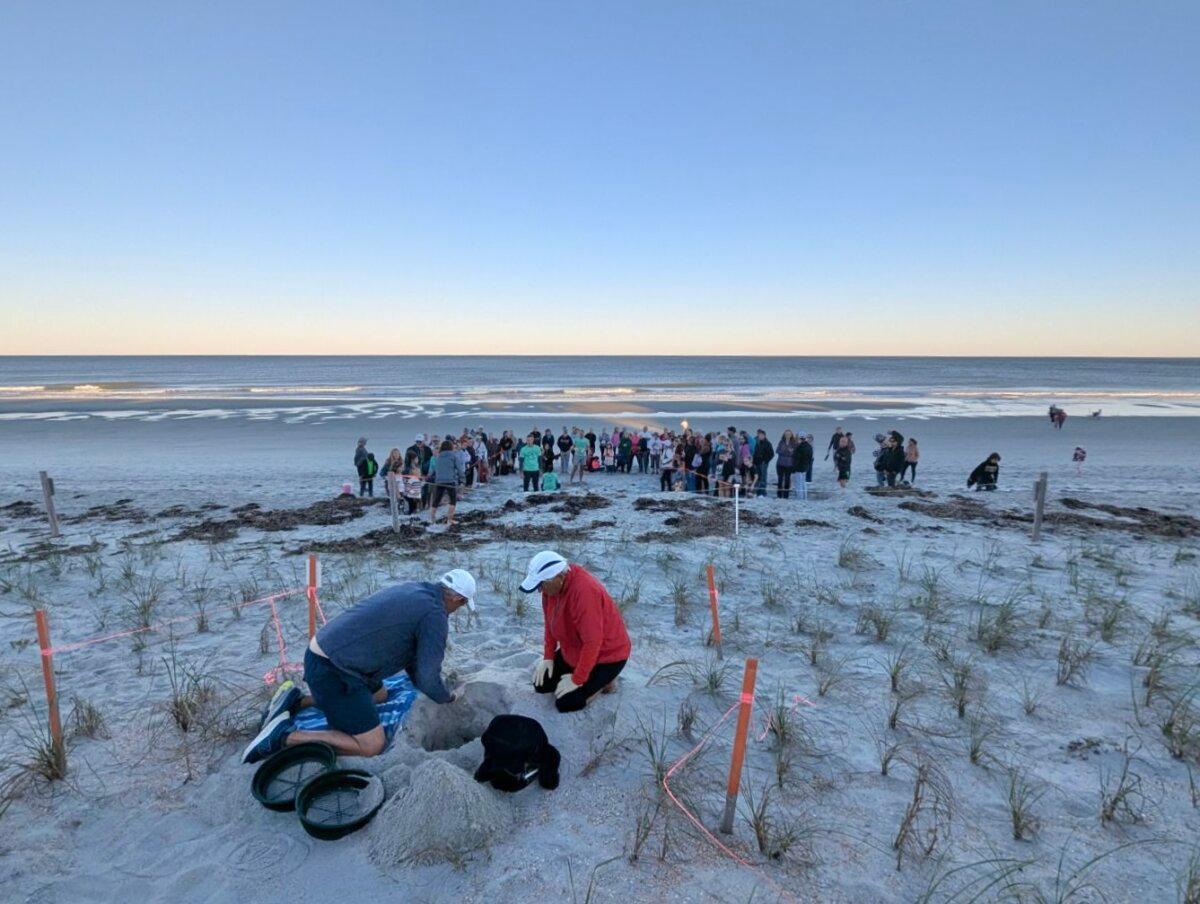
When the evaluation was complete, volunteers placed the wiggling hatchlings on the dune. They raced to the surf, flippers waving and digging into the wet sand.
By law, only researchers with permits and the volunteers they supervise may touch the turtles. And then, it’s only to point them toward the ocean to find their own way to the surf.
They’re allowed to help out a few stragglers. But they’re encouraged not to intervene much.
Nature must take its course.
But it’s magical every time, Weidenhammer said.
Promising Trends
In all, there were 115 eggs found in the nest—10 fewer than the average for green sea turtles.Of those, 105 hatched, giving it an unusually high success rate of 91.3 percent.
All of this was good news, as the year saw the fifth-lowest number of turtles in 15 years—86 in all—to build nests on the beach, he said.
But that’s not a worrisome statistic, he said.
Sea turtles lay eggs only every couple of years. And in years that a female nests, she may build several.
In 2022 and 2023, there were record numbers of nests.
“We expected to have a lower nesting season this year or next,” Meers said.
And for the clearest picture of populations, scientists consider “nesting trends across decades, rather than year to year,” he said.
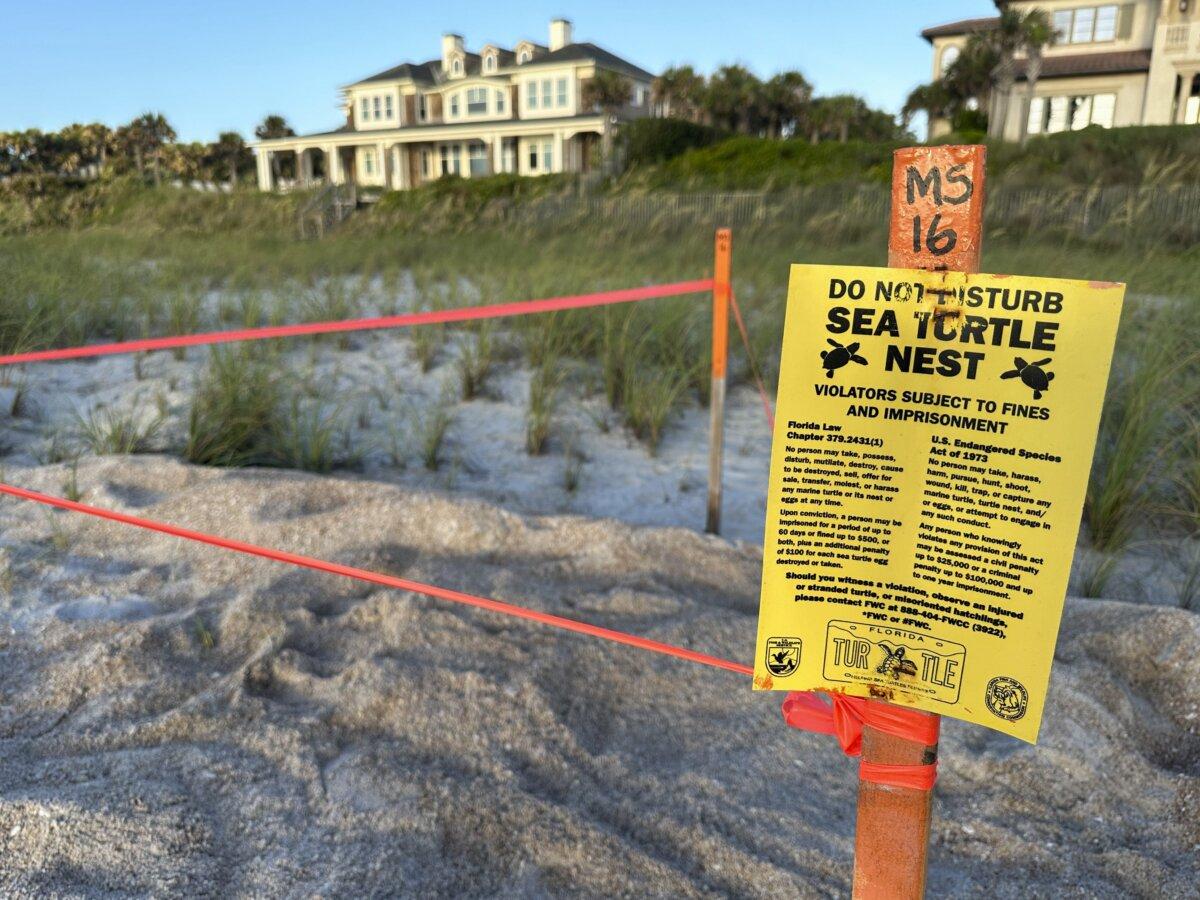
‘The Wonders of This Earth’
Nelle Funderburk, a visitor from Atlanta, was walking down the beach with her daughter and her dog, scanning the sand for shark teeth, when they noticed a gathering crowd.“It was just a wonderful experience to watch four very small, green turtles being dug out of the sand and waddling to the ocean,” she told The Epoch Times.
It’s thought that by crawling to the water, the hatchlings become able to identify the beach decades later, Meers said. It’s not clear whether the females return to the same beach to lay eggs. But some scientists suspect that’s the case.
“We applauded when they were dug out, and again when they flapped into the ocean,” Funderburk said.
“The tide was going out, and they just went with it. People were saying, ‘Bon voyage!’ And my daughter said, ‘Good travels, guys!’”
It felt almost as if they were sending youngsters off to kindergarten, she said.
“It just was a wonderful thing. Children, particularly, should experience and enjoy the wonders of this Earth,” she said.
